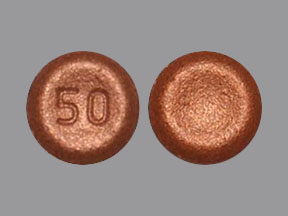Safinamide Disease Interactions
There are 4 disease interactions with safinamide.
Safinamide (applies to safinamide) hepatic impairment
Major Potential Hazard, Moderate plausibility. Applicable conditions: Liver Disease
Safinamide is contraindicated in patients with severe hepatic dysfunction (Child-Pugh C). In patients with moderate hepatic impairment the maximum recommended dose is 50 mg orally once a day. If a patient taking this dose progresses from moderate to severe hepatic impairment, safinamide should be discontinued.
Dopaminergic antiparkinsonian agents (applies to safinamide) psychosis
Moderate Potential Hazard, Moderate plausibility.
Ordinarily, patients with major psychotic disorder should not be treated with dopaminergic antiparkinsonian agents, because of the risk of exacerbating psychosis. Hallucinations and psychotic-like behavior have been reported with dopaminergic medications. In addition, certain medications used to treat psychosis may exacerbate the symptoms of Parkinson's disease and may decrease the effectiveness of these drugs. The use of bromocriptine in patients with severe psychotic disorders is not recommended.
Safinamide (applies to safinamide) hypertension
Moderate Potential Hazard, Moderate plausibility.
Safinamide may cause hypertension or exacerbate existing hypertension. Patients should be monitored for new onset hypertension or hypertension that is not adequately controlled after starting treatment. Dosage adjustment may be necessary if elevation of blood pressure is sustained.
Safinamide (applies to safinamide) retinal pathology
Moderate Potential Hazard, Moderate plausibility. Applicable conditions: Retinal Disorder, Uveitis
Animal studies with safinamide showed retinal degeneration, loss of photoreceptor cells, cataracts, and retinal scarring. Patients should be periodically monitored for visual changes, especially if they have a history of retinal/macular degeneration, uveitis, inherited retinal conditions, family history of retinal disease, albinism, retinitis pigmentosa, or active retinopathy (e.g., diabetic retinopathy).
Switch to professional interaction data
Safinamide drug interactions
There are 488 drug interactions with safinamide.
Safinamide alcohol/food interactions
There are 3 alcohol/food interactions with safinamide.
More about safinamide
- safinamide consumer information
- Check interactions
- Compare alternatives
- Reviews (4)
- Side effects
- Dosage information
- During pregnancy
- Drug class: dopaminergic antiparkinsonism agents
- Breastfeeding
- En español
Related treatment guides
Drug Interaction Classification
| Highly clinically significant. Avoid combinations; the risk of the interaction outweighs the benefit. | |
| Moderately clinically significant. Usually avoid combinations; use it only under special circumstances. | |
| Minimally clinically significant. Minimize risk; assess risk and consider an alternative drug, take steps to circumvent the interaction risk and/or institute a monitoring plan. | |
| No interaction information available. |
See also:
Further information
Always consult your healthcare provider to ensure the information displayed on this page applies to your personal circumstances.


